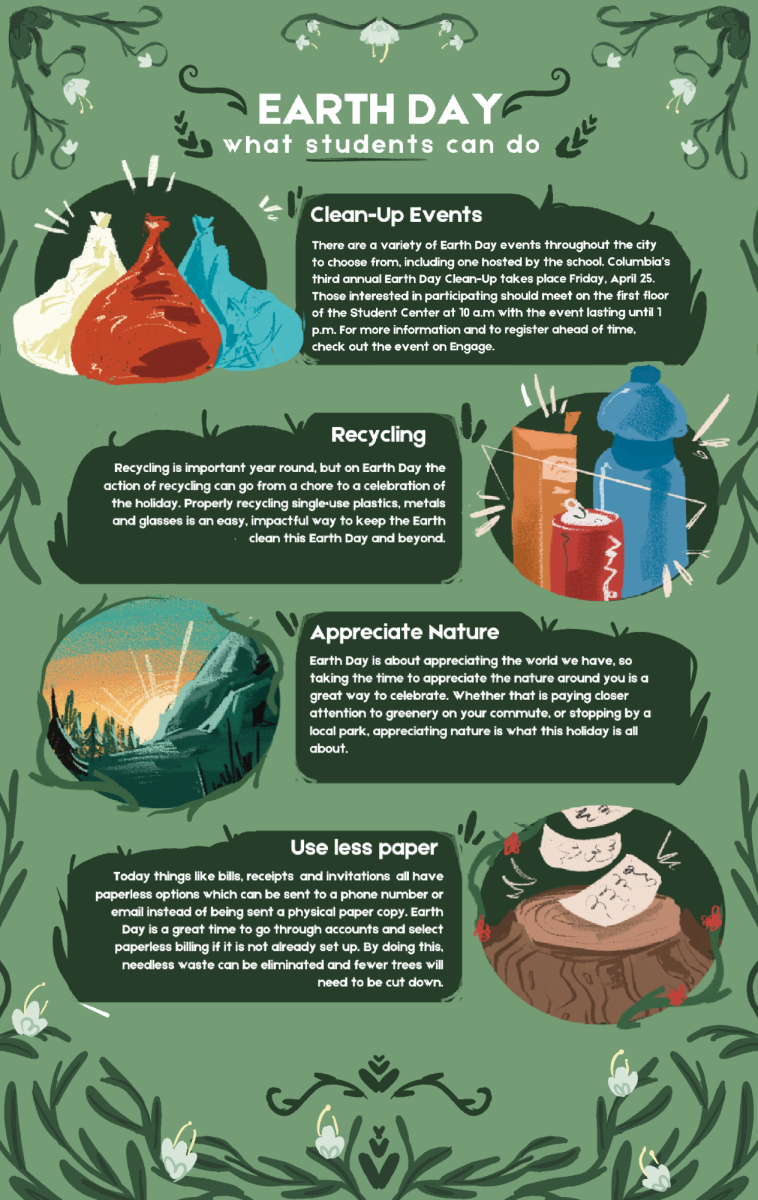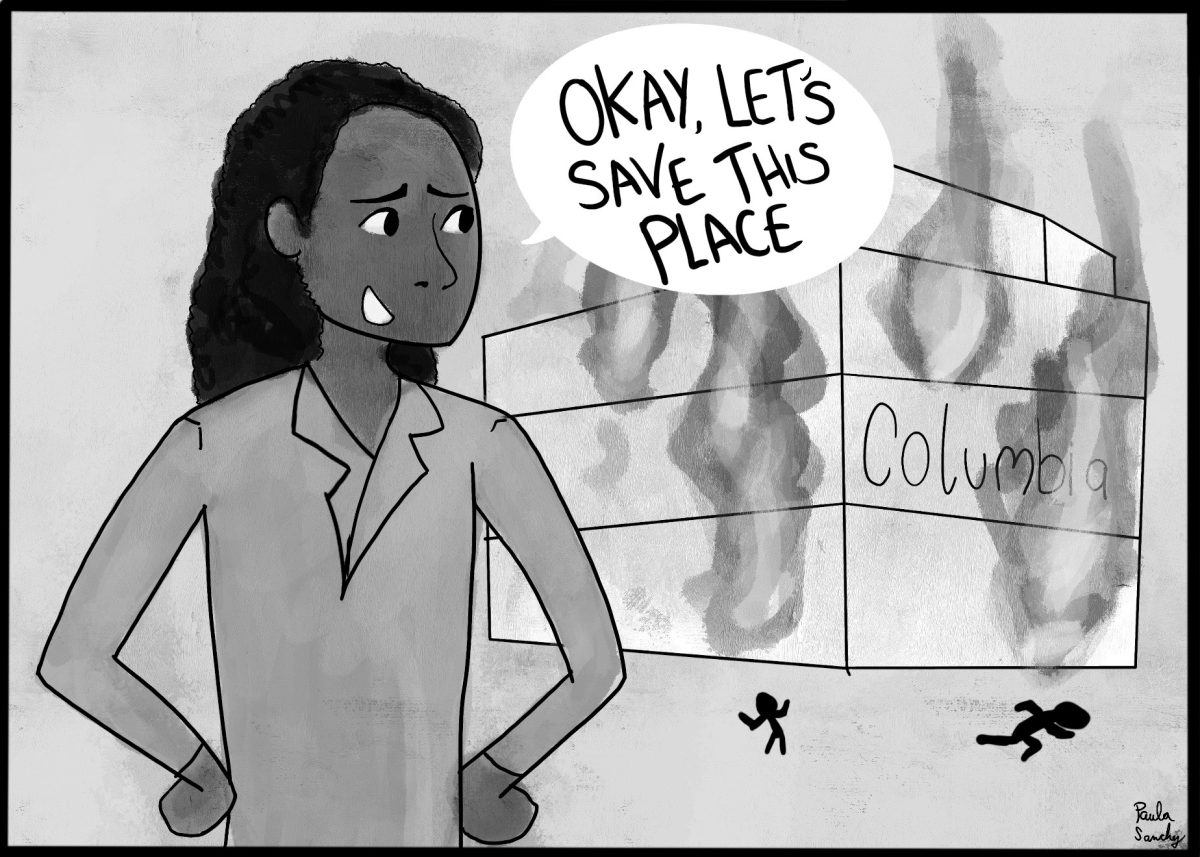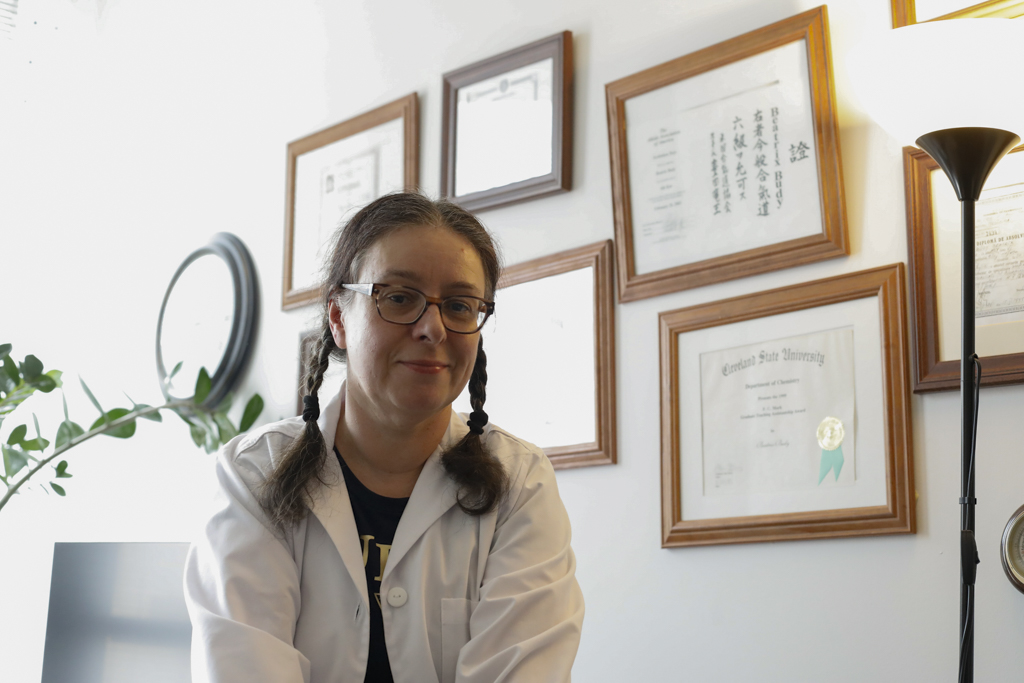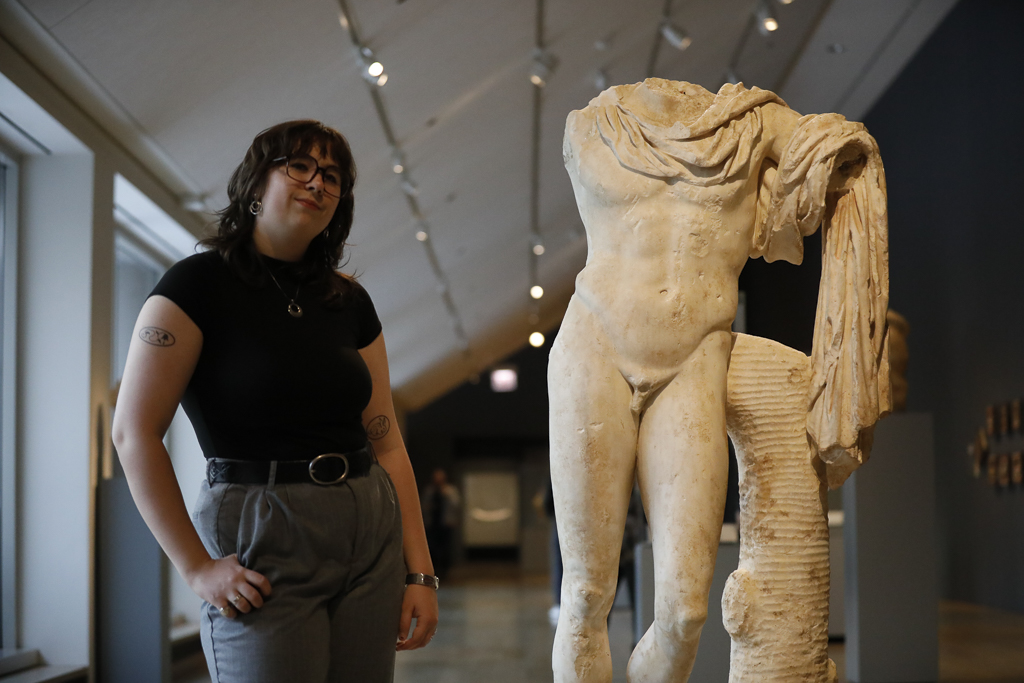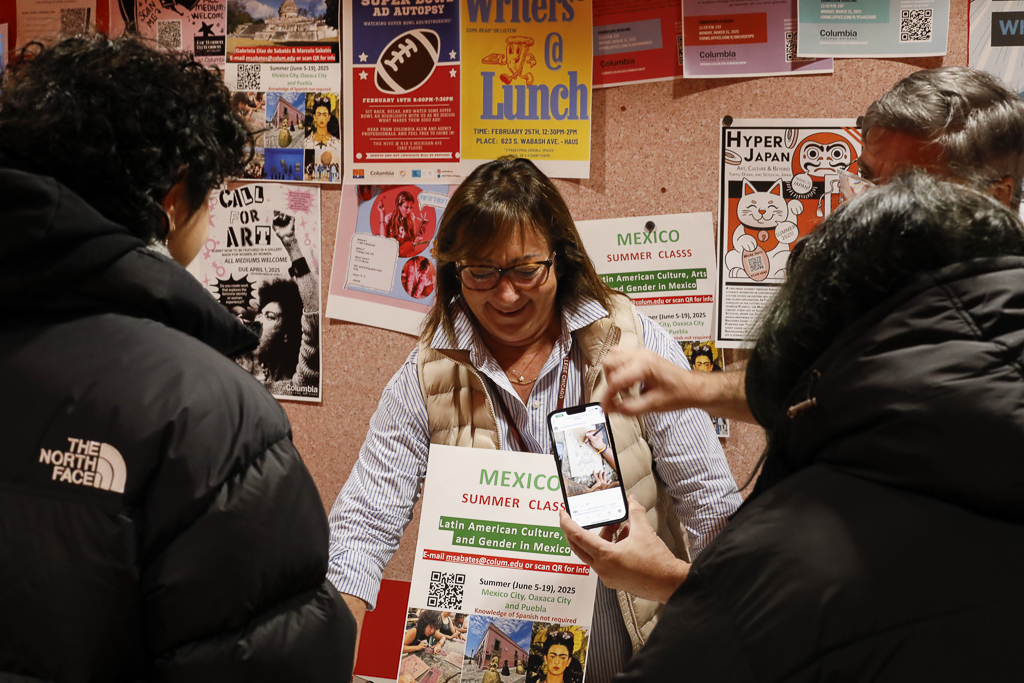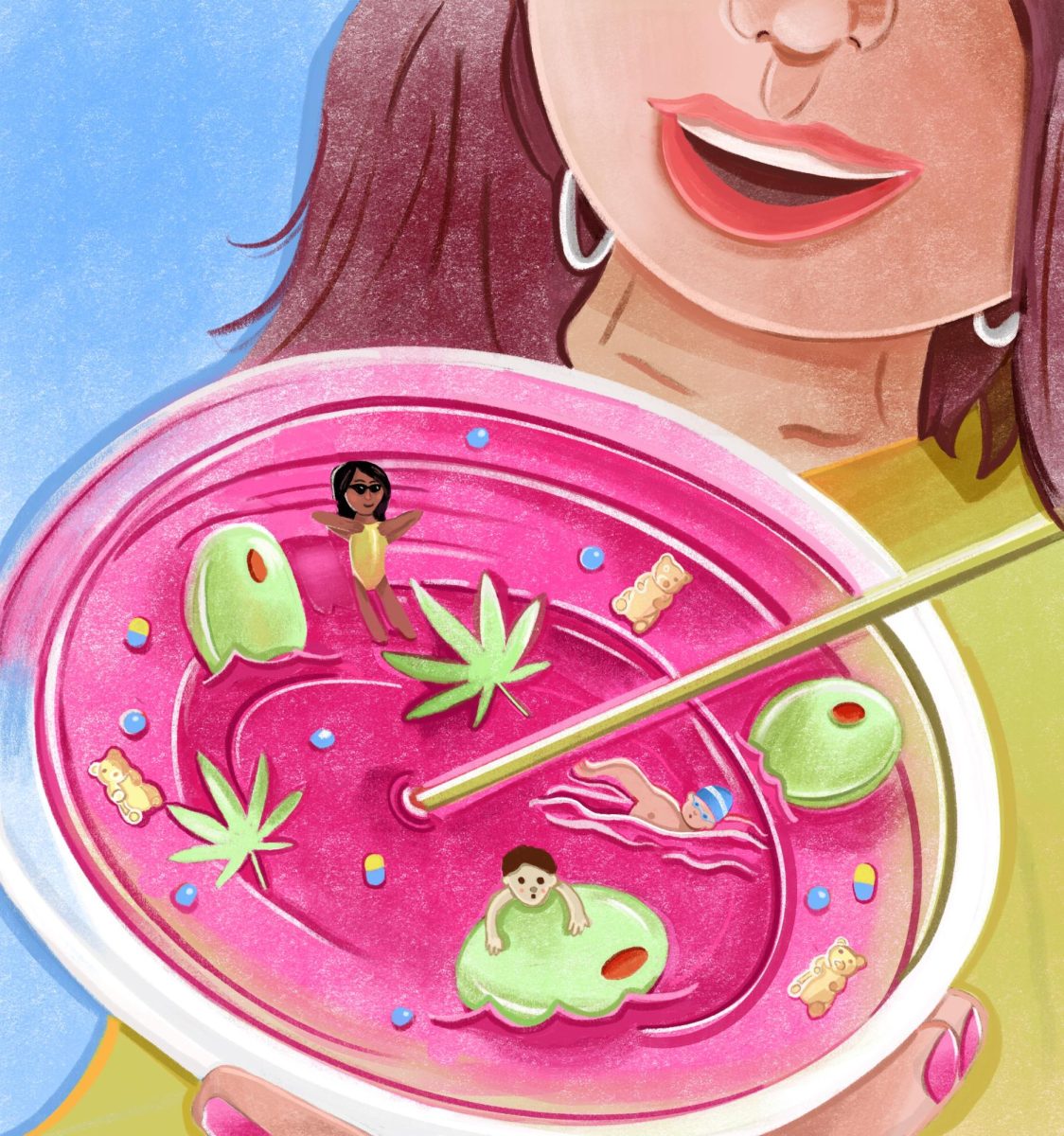Five years ago this spring, the campus community was unexpectedly thrust into the world of online learning when a mysterious virus forced the college to close, sending students, staff and faculty home.
The unprecedented disruption marked the beginning of the pandemic and nearly two years of mask and social distancing restrictions at the college and widespread mental health challenges.
Meanwhile, faculty got a crash course in online teaching, and staff had to adjust quickly to remote work.
“At first, many of us thought we’d only be working from home for a few days, but the news of the contagion kept building, and before long, life began to feel like something out of a dystopian novel,” said Craig Sigele, president of the United Staff of Columbia College and academic manager in the School of Communication and Culture.
In multiple interviews, Columbia administrators, faculty, staff and alumni who lived through that extraordinary time at the start of the COVID-19 pandemic recounted their experiences of an uncertain changing world.
Even though in many ways there are no longer visible signs at Columbia of those unsettling first weeks and months, the pandemic changed the school in profound ways, with hybrid meetings, online advising, chat-based collaboration and online course offerings.
The start of the pandemic
On Jan. 21, 2020, the Center for Disease Control and Prevention confirmed the first case of coronavirus in the U.S., and a few weeks later the Trump administration declared a public health emergency.
“I remember my first discussion about the possibility of there being a concern about COVID-19 was in my fourth week in this role,” said Nathan Bakkum, senior associate provost and associate professor in the School of Audio and Music.
Bakkum, along with other representatives from major offices at the college, conversed about the possibility of having to move classes online at a security meeting at the end of January 2020.
In the weeks that followed, deaths and hospitalizations climbed. The World Health Organization declared a global pandemic in March 2020, and one by one, states started to issue stay-at-home orders, shutting schools, restaurants and public spaces.
On March 12, Columbia shut down for three weeks so instructors could adapt their in-person instruction to an online setting. All assignments, exams and activities were put on hold until April 6.
Eric Scholl, interim co-director and associate professor at the new School of Film and Television, remembers thinking that the situation was “overblown” and that everything would go back to normal after a few weeks.
“I was completely wrong,” Scholl said. “It caused us to rethink how we delivered course content and how we delivered education, in a way that we’re still feeling today. Some of the changes that came out of it were good, some of them were less good.”
Curtis Lawrence, former associate professor of journalism and faculty advisor to the Columbia Chronicle, was tasked with having to move the newsroom online, which, in itself, wasn’t “totally digital yet.”
“It was such a period of uneasiness,” said Lawrence. “We didn’t know from one day to the next. I think most of the professors would probably agree that we were as much in the dark as the students were, waiting from one day to the next to see what was going to happen.”
Around this time, the college’s Incident Assessment Task Force, an emergency policy group composed of employees from different offices at the college, including Bakkum, Columbia’s Chief of Staff Laurent Pernot and Associate Vice President of Security Ronald Sodini, met from March to April seven days a week for multiple hours to discuss how to carry out operational procedures in the early days of the pandemic.
IATF looked at how to help faculty transition their classes online, how to help residents in dorms get home safely and how the college was going to refund housing costs to students.
At the same time, COVID was taking a personal toll on many campus members. Black and Latino communities were hardest hit.
“To this day, I’ve not had a confirmed COVID diagnosis, but I lost loved ones who entered the hospital only to die alone, an experience that painfully echoed the losses of friends to AIDS in the 80s and 90s,” Sigele told the Chronicle.
Remote learning
Before the spring of 2020, online learning — and even use of Canvas, and before that Moodle, the college’s learning management systems, were limited.
Few faculty had ever taught online, and most students had little experience with learning virtually.
According to section count data supplied by Bakkum, only 5% of classes were fully online during the 2019-2020 academic year. Hybrid sections were not an option at the time.
In the Fall 2020, 2,030 courses in all were offered. 1,470 of them were online. Over the next year, a steep decline in fully online courses occurred: Spring 2021 had 1,327 and Fall 2021 had 386.
This year, out of the total 1,484 sections that are available, 100, or 6.7% of the courses, are fully online.
Bakkum said that one of the “big sets of challenges” that faculty faced during Spring 2020 was teaching hands-on courses like American Sign Language, painting, drawing, filmmaking and fashion design.
A specific concern from Scholl and his colleagues was how to provide online courses that felt like in-person experiences for students. For the Producing MFA, the last five weeks of the semester consisted of Columbia’s Semester in LA program, something that wasn’t able to be done at the time due to the lockdown.
To make up for it, online courses were offered that were taught by people working in the industry in Los Angeles so students could “remotely” get that experience of “being in that environment and working on a set.”
“Given the problems, I think they still got information that they needed in a way that was certainly better than not doing it at all,” Scholl said. “None of it should have worked, but it all did work. Given the circumstances, I think it went as well as it could.”
Some of the course materials that Scholl created during that time for his classes are still used today, such as camera tutorials.
Bakkum gives “so much credit” to the Columbia faculty for “coming up with adaptations and other ways” to engage with their students during that time.
“I know our students struggled with loneliness, with frustration, with uncertainty,” Bakkum said. “It can be really difficult to put on a brave face, show up at online class and smile and engage and interact and pretend like it’s the Brady Bunch.”
It wasn’t easy for faculty or staff either.
“Staff across the college were scrambling to adjust, many without the equipment or infrastructure needed to work from home,” said Sigele.
Another task force, whose members were pulled from the IATF, stakeholders in full-time faculty, part-time faculty and the staff union, was created to address policies once students returned for the Fall 2020 semester. This would become the COVID Task Force.
Some of the policies the COVID Task Force looked at were mask mandates, social distancing and how certain classes with hands-on approaches would look.
According to Bakkum, there were disagreements and agreements in the COVID Task Force, but the “judgment of success” that mattered the most was if they kept the Columbia community safe.
As COVID-19 numbers dwindled in Chicago at the beginning of 2022, the city lifted its mask mandate in February. Columbia held on to the mask protocol longer than many others, officially ending their mandate on Feb. 20, 2023, nearly a year after DePaul University and Loyola University. The University of Illinois Chicago kept their mask mandate until February 2023, too.
“We grabbed the bull by the horns as a college to get back to as much in-person instruction as possible,” Pernot said in an email to the Chronicle. “But it was the faculty and staff at the college, especially on the task force, that made us better and kept us on track.”
Madhurima Chakraborty, associate professor in the School of Communication and Culture, was the Faculty Senate president from 2021 to 2024. She still worries about the ways she may have “screwed up” as president when students were returning to the college after lockdown. She admits she was “impatient” and “pretty intense” in meetings due to some of the college’s decisions she felt weren’t “in the best interests of the full-time faculty.”
In 2021, the college prohibited children on campus, a policy that was communicated by email with little input from campus representatives. It remained in place for nearly a year until it was mostly overturned.
“I was relentless in trying to find a way to get it reversed,” Chakraborty said. “In response, I was told that I did not and could not speak for the entire college community.”
She reached out to representatives from different communities at the college, from part-time faculty, staff and students.
“I realized that we in fact were more united than anything else on this,” she said.
The lasting impact
Columbia’s enrollment has been steadily decreasing since 2019. Enrollment before the pandemic was 6,947 compared to 4,952 currently, although there are other contributing factors, including overall downturns in college enrollment and the impact of the part-time faculty strike in 2023.
Alum Pete Conroy, who was a sophomore transfer student in Fall 2020, had a hard time focusing on his courses due to his ADHD. To him, the monotony of sitting “at your computer all day and not actually” being there in person for classes contributes to difficulty learning through online courses.
“That whole year and a half, I don’t think it was a normal college experience at all,” Conroy said. “I would have loved to have none of that bullshit.”
Looking back on her time at the college, alum Alina Pawl-Castanoñ experienced Columbia in the “after” of COVID, from becoming an adult in Chicago and not being able to take advantage of the college’s resources to “figuring out political dynamics and the world politics of it all.”
A first-year student in Fall 2020, she was confined to her “filing cabinet” dorm room on the 10th floor of the Dwight, taking all of her eight classes online. Sitting on her bed, she could touch either side of the room. It was like a “cubicle.”
Not being from a big city, Pawl-Castanoñ was left feeling isolated with “no way to make connections.”
Even though campus life is vibrant once again, there are some notable ways the pandemic impacted faculty and staff.
Before the pandemic, the staff Sigele and the staff union would meet over a shared meal and discuss their plans. A sense of “camaraderie” and “rhythm” was felt during those meetings.
“Now, everything is virtual,” he said.
Faculty Senate has remained hybrid, although most people attend online.
According to Sigele, work feels more intense and demanding and time feels “more compressed.”
“Perhaps it’s a lingering effect from layoffs that came later,” he said. “Perhaps it’s something deeper- something reshaped in all of us by that long season of isolation, uncertainty, and constant adaptation.”
Lucy Trimarco, assistant professor in the School of Design, said that coronavirus had both positive and negative impacts on both students and faculty, with the negative side reaching to social skills that “is still prevalent.”
“When we came out of the pandemic, I took a little personality test and was an introvert,” she said. “I’ve never been an introvert my whole life. It was the first time of me stepping back and going, ‘Well, of course I’m an introvert for what we went through.’”
Chakraborty said “that the college handled COVID-related policies and practices pretty well,” citing positive responses from full-time faculty surveys where the common thread of responses was that faculty “felt safe, heard, and supported around their COVID-related concerns.”
“It really felt that we were in it together and that our success as an institution was predicated on us working together,” she said. “I have been on leave this academic year, so I could be wrong, but I’m not sure that feeling has sustained.”
Copy edited by Patience Hurston
This story was first published in the Chronicle’s 2025 April print issue.
Resumen en Español:
Cinco años después del inicio de la pandemia de COVID-19, Columbia reflexiona sobre los profundos cambios que experimentó. El cambio repentino al aprendizaje en línea, el distanciamiento social generalizado y los mandatos de uso de mascarillas interrumpieron las operaciones de la universidad, obligando a los profesores a adaptarse rápidamente a la enseñanza virtual, mientras que el personal transitaba al trabajo remoto. La pandemia también trajo importantes desafíos para la salud mental, particularmente para las comunidades de color, y provocó una disminución en la matrícula de la universidad. Aunque Columbia ha regresado a la instrucción presencial, el impacto duradero del aprendizaje híbrido, la colaboración virtual y las dinámicas sociales alteradas persisten. Los profesores y el personal también informan sentirse más aislados y abrumados debido a los efectos a largo plazo de la pandemia en su cultura laboral.
Resumen por Doreen Abril Albuerne Rodriguez
Resumen editado por Manuel Nocera



